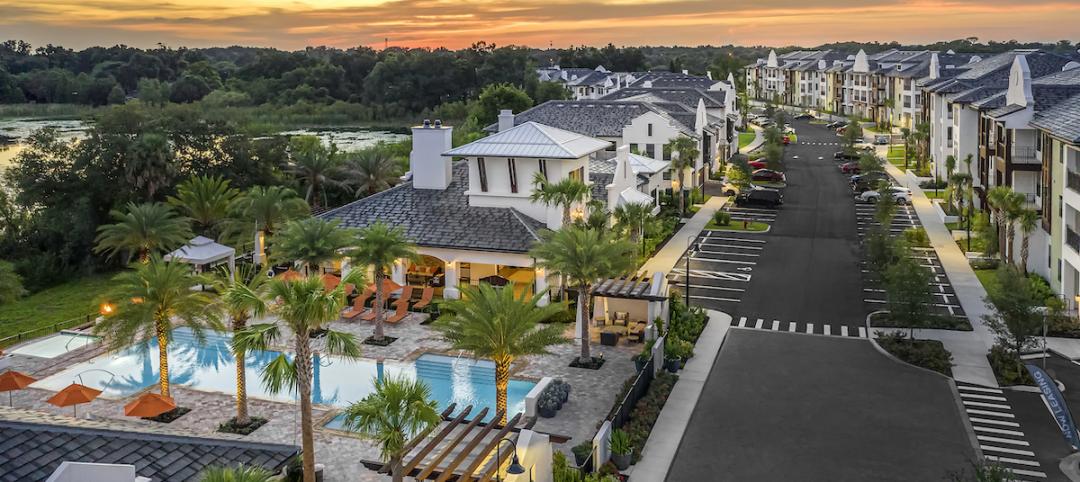The growth in demand for multifamily housing has been nothing short of astounding over the past several years. And that demand is expected to keep growing in line with shifting lifestyles throughout America.
But as the economy improves, will single-family homeownership once again regain its appeal, especially among younger, more mobile adults? And will pricing of luxury condos and apartments, which has been driving construction of late, reach a point of diminishing return sooner than later.
Byron Carlock, Jr., U.S. real estate practice leader for the consulting firm PwC, expects demand to remain steady, but to soften a bit for higher-priced products. In an interview with the National Real Estate Investor, Carlock, who is a member of the Urban Land Institute and a board member Emeritus at Harvard Business School, shares five predictions about where he thinks the multifamily sector is headed in 2015.
Here’s a look at those predictions, viewed within a larger context of related market factors.
1. Millennials will jump into the housing market, eventually. Student debt now exceeds $1.1 trillion. The Institute for College Access & Success released a report last November that found, in 2013, seven in 10 graduating seniors at public and private nonprofit colleges had student debt that averaged $28,400. Graduate school can tack on another $18,000 to $60,000 per year, depending on the specialty or discipline. So it’s not surprising that more than 31% of adults ages 18 through 34 were living with their parents in 2014, according to an analysis of Census data by the real estate website Trulia (www.trulia.com).
Carlock concedes these circumstances, along with a sluggish job market, have kept 29 million young adults from buying or renting a home. Nevertheless, he predicts, somewhat cautiously, that Millennials will move out and start their own households “over the coming years as the economy’s slow recovery continues.”
2. Affordability will continue to constrain household formation. Home prices keep rising. The median price for a new home increased in 2014 by 5.5% to $283,000. Last December, the median existing home price stood at $210,200, or 6.3% more than the same month a year earlier, according to Census Bureau and National Association of Realtor estimates. And for the fifth consecutive year, rents jumped in 2014, by 3.6% to an average monthly lease rate of $1,124.38, which represented the highest rate since Reis, the real estate research firm, started tracking rents in 1980. Vacancy rates, at 4.2% last year, were the lowest they’ve been since 2000.
Carlock foresees an ongoing shortage of affordable multifamily housing units, and he certainly isn’t alone in that assessment. The National Association of Home Builders recently predicted only a 1.7% increase in multifamily starts in 2015, and a 0.8% increase in 2016, in anticipation of the multifamily sector reaching its supply-demand equilibrium.
The vast majority of multifamily development and construction of late has been for rental apartments. And much of what’s being built targets affluent customers, many of them from outside the U.S. That leads to Carlock’s next prediction:
3. Foreign buyers can’t sustain the luxury market forever. The New York Times recently quoted Corcoran Sunshine Marketing Group, which estimates that twice as many new condominiums will be available in Manhattan—6,500 in 100 buildings—as there were in 2014, and the most since 2007. Half of those units will be in the middle luxury range, with prices between $1,700 and $2,300 per sf; about 500 new condos will be priced at $5,000 per sf or more.
In a recent column, CNBC’s real estate commentator Diane Olick points out that a 504-unit apartment building in Chicago that had sold for $328 million was renting apartment units for between $1,700 and $12,000 per month.
Carlock joins a host of market observers who say that selling price and rent appreciation at the luxury end of the multifamily spectrum is the result of wealthy foreign buyers who are making investments as much as purchasing living spaces. However, he cautions “questions are emerging as to the depth of that buying community.” Indeed, Bloomberg Businessweek reported in late January that luxury condos are sitting unsold much longer in New York, Chicago, and Los Angeles because a strengthening U.S. dollar is eroding foreigners’ purchasing power.
4. Multifamily will continue to offer lifestyle flexibility. It is well established that multifamily housing has two primary customer targets: Millennials and aging Baby Boomers, each with different preferences and needs. For Millennials, multifamily—especially smallish rental apartments—offers a way to live closer to their jobs in urban cores that is more financially feasible than owning a home (the downpayment for which they couldn’t afford, anyway). For older baby boomers, moving into multifamily housing is often part and parcel with downsizing after children move out of the nest, and seeking maintenance-free living.
The “walkability” factor unites these groups, as both like multifamily most when it’s near retail, restaurants, grocery, and entertainment. “Multifamily housing will continue to provide greater flexibility and mobility, and be deemed more convenient by those seeking to simply their lifestyle, downsize, or maintain locational flexibility due to job or family issues,” states Carlock. That comment blends naturally into another of his predictions:
5. Multifamily demand will continue to increase with urbanization trends. Eighty percent of the U.S. population now lives in urban areas. And Millennials currently live in urban areas at a higher rate than any other generation, according to Nielsen research. But it’s an open question as to whether urban living is simply expedient or a life-long preference for Millennials.
The Demand Institute recently polled 1,000 18- to 29-year-olds. Using their responses, the Institute extrapolates that this cohort would spend $1.6 trillion on home purchases and $600 billion on rent in the years 2014 through 2018. Over that period, many will marry and start families, which will be a key factor in where they decide to live. And 48% of those polled said their next home would be in the suburbs, and one-third expects to purchase a single-family home.
Related Stories
Market Data | Dec 29, 2020
Multifamily transactions drop sharply in 2020, according to special report from Yardi Matrix
Sales completions at end of Q3 were down over 41 percent from the same period a year ago.
Multifamily Housing | Dec 16, 2020
What the Biden Administration means for multifamily construction
What can the multifamily real estate sector expect from Biden and Company? At the risk of having egg, if not a whole omelet, on my face, let me take a shot.
Giants 400 | Dec 16, 2020
Download a PDF of all 2020 Giants 400 Rankings
This 70-page PDF features AEC firm rankings across 51 building sectors, disciplines, and specialty services.
Multifamily Housing | Dec 4, 2020
The Weekly show: Designing multifamily housing for COVID-19, and trends in historic preservation and adaptive reuse
This week on The Weekly show, BD+C editors spoke with leaders from Page & Turnbull and Grimm + Parker Architects about designing multifamily housing for COVID-19, and trends in historic preservation and adaptive reuse
Giants 400 | Dec 2, 2020
2020 Multifamily Sector Giants: Top architecture, engineering, and construction firms in the U.S. multifamily building sector
Clark Group, Humphreys & Partners Architects, and Kimley-Horn head BD+C's rankings of the nation's largest multifamily building sector architecture, engineering, and construction firms, as reported in the 2020 Giants 400 Report.
Smart Buildings | Nov 20, 2020
The Weekly show: SPIRE smart building rating system, and pickleball court design tips
The November 19 episode of BD+C's The Weekly is available for viewing on demand.
AEC Tech | Nov 12, 2020
The Weekly show: Nvidia's Omniverse, AI for construction scheduling, COVID-19 signage
BD+C editors speak with experts from ALICE Technologies, Build Group, Hastings Architecture, Nvidia, and Woods Bagot on the November 12 episode of "The Weekly." The episode is available for viewing on demand.
Multifamily Housing | Nov 11, 2020
San Jose affordable housing project will feature a mass timber frame
SERA Architects and Lendlease will design and build the project.
Multifamily Housing | Oct 30, 2020
The Weekly show: Multifamily security tips, the state of construction industry research, and AGC's market update
BD+C editors speak with experts from AGC, Charles Pankow Foundation, and Silva Consultants on the October 29 episode of "The Weekly." The episode is available for viewing on demand.

















